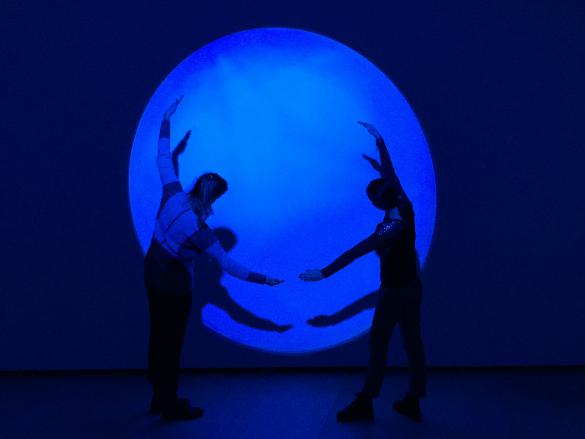
In conjunction with Andy Warhol: Shadows, In Focus is the name we give to each Didaktika project created for the exhibitions presented in gallery 105. It explores key characteristics of Andy Warhol’s work, such as his unique use of colors, objects, and icons of American pop culture, and his frequent application of silkscreen printing techniques. You may experiment with the light and color of the audiovisual installation devised specifically for this In Focus presentation.
In the didactic space of Andy Warhol: Shadows in the Museum you will have the opportunity to experiment hands-on with light and color.
Andy Warhol was a leading practitioner of Pop art in the United States in the 1960s. Pop artists often used images borrowed from popular culture. Andy Warhol appropriated images of commercial products, such as the label of a famous soup brand; iconic symbols like the dollar sign; celebrities, including the actress Marilyn Monroe (who is depicted in another work by Warhol that is on display in Gallery 303); and objects and events with catastrophic connotations, such as the electric chair or car accidents. These types of images became central themes in his work.
Much of Warhol’s work is figurative, but he also experimented with abstraction, as seen in Shadows and several other series created between 1977 and 1983 (such as Egg, Yarn, and Oxidation). Shadows clearly documents his investigations into light and the shadows created by different objects. It also evidences a handmade pictorial treatment that makes each canvas unique, although they may seem identical at first glance.
Warhol challenged the conventional notion of originality in art by mechanically and repetitively reproducing (through silkscreen printing) images of ordinary commercial objects and exhibiting his pictures in the context of galleries and museums, spaces reserved for contemplating artworks.
Andy Warhol and his assistants called their New York studio The Factory, referencing the large quantity and variety of pieces they produced there. Warhol worked with a wide range of artistic mediums, including painting, photography, silkscreen printing, film, fashion, television, video, and music. The photographs used to produce the Shadows silkscreen prints might have been taken at The Factory.
Warhol generally used bright, bold colors, like the red, black, yellow, white, blue, purple, and green hues in Shadows. Each person’s perception of color depends directly on human’s brain. Millions of cells placed in the back of the eye (rods and cones mainly), are responsible for depurating the light, and transform it in electric impulses which are sent to the brain through the optic nerve. Cones situated in the heart of the human retina, in an area called fovea, distinguish three colors: red, blue and green. It is the brain’s function to make the perception of color a conscious fact. Color influences fascinated Warhol as a device for introducing codified messages or data. He studied the theories of American color psychologist and art historian Faber Birren (1900-1988) and his color circle.
The didactic space in gallery 105 presents an audiovisual installation devised specifically for this In Focus presentation which experiments with light and color.
